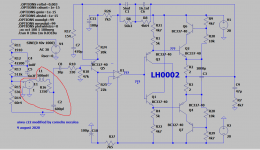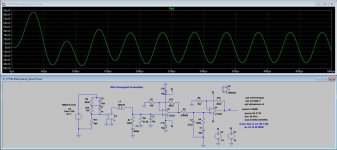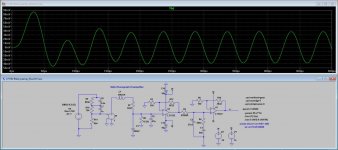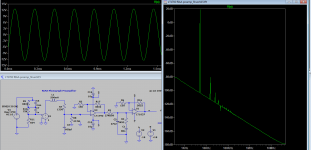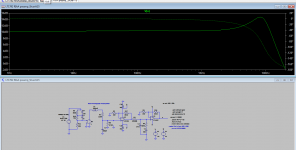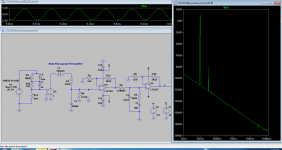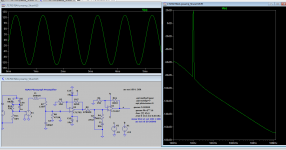what's circled in red is a shure v15typeIII and its loadingHow would you add the cartridge inductance to the sim, as you suggested?
Attachments
Sorry, I didn't pay attention to Muffsy's shop.
And I found that I had simulated his schematics too, but with the LT fet chips, not the BJT.
Some people do not agree with your claims abut the BJT chips not being recommended for a moving magnet preamp. I will not enter into that discussion, and I would prefer to actually listen to both versions and then say what I think.
You saw the load I am using on my simulations. What would you suggest to change on it? Where would you add that 1Kohm and 500mH in series?
And I found that I had simulated his schematics too, but with the LT fet chips, not the BJT.
Some people do not agree with your claims abut the BJT chips not being recommended for a moving magnet preamp. I will not enter into that discussion, and I would prefer to actually listen to both versions and then say what I think.
You saw the load I am using on my simulations. What would you suggest to change on it? Where would you add that 1Kohm and 500mH in series?
OK, I did that. Things didn't change a bit on THD or at the output.
Please do not that the rest of the input load I'm using is not the one on your Aiwa file. If I use that THD gets even higher.
Can you explain the weird output sinewave?
Please do not that the rest of the input load I'm using is not the one on your Aiwa file. If I use that THD gets even higher.
Can you explain the weird output sinewave?
Attachments
that's start-up...it doesn't matter, you can sim from 1ms to 11ms... for 1khz or 1ms to 2ms for 10khz. You need to run a bode plot from 10hz to 20khz to see what that cart is really doing and you'll see some nasty resonances too.
Here are two completely foolproof, guaranteed-to-work, startup circuits. The drawings show them starting-up a Jung/Didden "Super Regulator" but they will work equally well on any other regulator you might care to try.
If you are AT ALL worried about whether or not your regulator will start up reliably, you can include these (small number of) components on your PCB design. Then, try out your regulator both ways: with, and without, the startup helper. If your regulator needs a helper: there it is! If your regulator turns out not to need a helper: just depopulate those few components. It's a Win-Win deal.
_
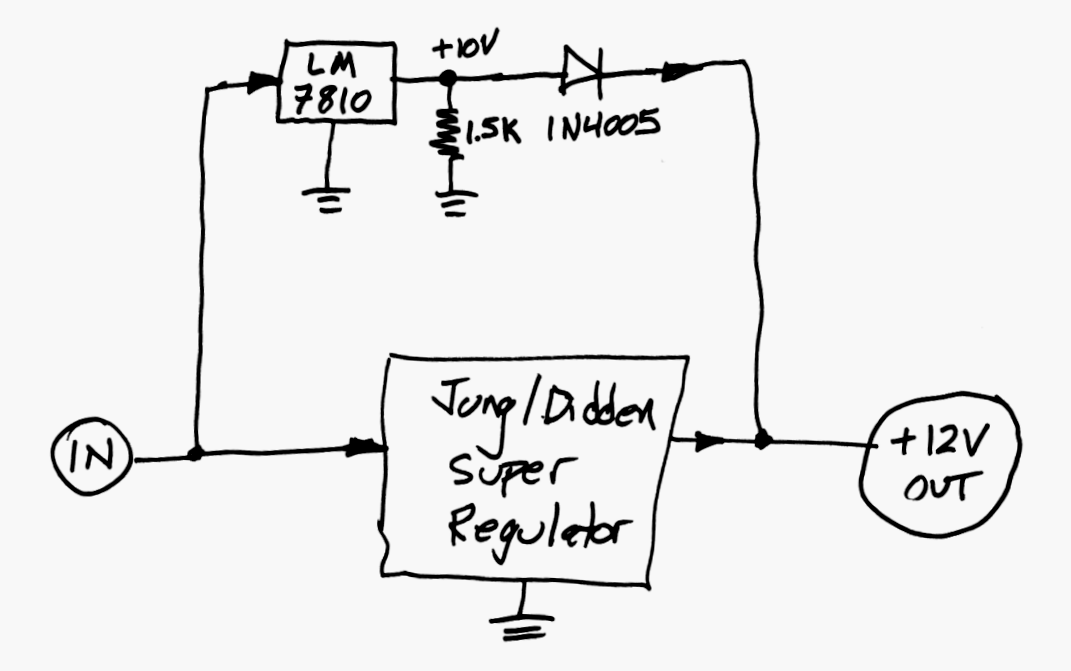
_
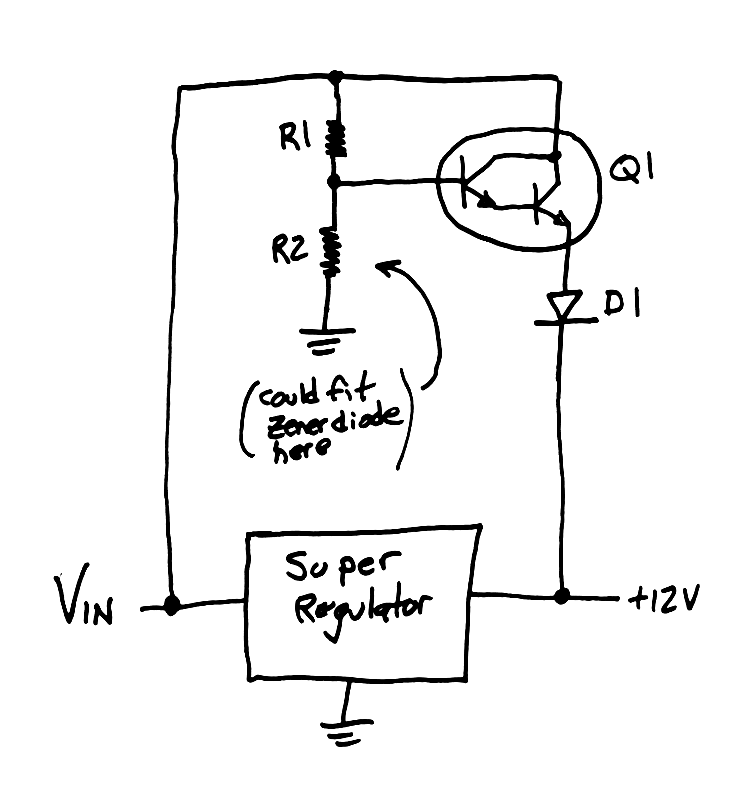
If you are AT ALL worried about whether or not your regulator will start up reliably, you can include these (small number of) components on your PCB design. Then, try out your regulator both ways: with, and without, the startup helper. If your regulator needs a helper: there it is! If your regulator turns out not to need a helper: just depopulate those few components. It's a Win-Win deal.
_
_
i ran some sims of my own and you better raise the supply rails to +-18v as the op-amp can take it.At 9..10khz resonance point the distortions for a 40v input simulating some dusty vinyl condition(corresponding to 250mv input saturation at 1khz) are really high, but acceptable for an op-amp circuit.for the rest of the audio band it will perform pretty well.The only real problem that a shure v15typeIII cart presents is that the higher than 10khz frequencies goes down rapidly so that 9...10khz resonance can go through the roof with dusty vinyls being easily perceived .That is why a valve preamp will always perform better with dusty records.It happens that i have a shurev15type 3 and with dusty records few silicon based preamps sounded good enough but none like a D3A based preamp...Modern rigid cartridges aimed at 45 rpm records used on DJ-turntables perform much better on dusty records, but are prone to distroy the 33rpm vinyls with their conical stylus.
Attachments
Last edited:
Here are two completely foolproof, guaranteed-to-work, startup circuits. The drawings show them starting-up a Jung/Didden "Super Regulator" but they will work equally well on any other regulator you might care to try.
Wrong thread, here we are just writing about an initial transient that damps out exponentially rather than a real start-up issue.
Well , i like everything that Mark is writing so i'd preffer this little offtopic to stay here.Some offtopics are really welcome! 🙂
That's ok.Your quasisaturation topics shed a totally unexpected light on some design problems i never thought of before and i am really tahankfull for it .
Last edited:
Some people do not agree with your claims abut the BJT chips not being recommended for a moving magnet preamp. I will not enter into that discussion, and I would prefer to actually listen to both versions and then say what I think.
If you want a bipolar op-amp that is well suited for moving magnet amplifiers, try an NE5534A.
Can you explain the weird output sinewave?
It's an initial transient that needs to damp out, like dreamth wrote. The simulator calculates the bias point with no signal at all and then applies a signal from t = 0 onwards, so you effectively have a tone burst starting at t = 0. It is perfectly normal for a filter to respond to that with some weird waveform that damps out exponentially. If you want to simulate the THD, you have to make sure to take a part of the waveform where the initial transient has damped out very well.
i ran some sims of my own and you better raise the supply rails to +-18v as the op-amp can take it.At 9..10khz resonance point the distortions for a 40v input simulating some dusty vinyl condition(corresponding to 250mv input saturation at 1khz) are really high, but acceptable for an op-amp circuit.for the rest of the audio band it will perform pretty well.The only real problem that a shure v15typeIII cart presents is that the higher than 10khz frequencies goes down rapidly so that 9...10khz resonance can go through the roof with dusty vinyls being easily perceived .That is why a valve preamp will always perform better with dusty records.It happens that i have a shurev15type 3 and with dusty records few silicon based preamps sounded good enough but none like a D3A based preamp...Modern rigid cartridges aimed at 45 rpm records used on DJ-turntables perform much better on dusty records, but are prone to distroy the 33rpm vinyls with their conical stylus.
These preamps will be used just once, so there won't be any dusty vinyl problem. I will wash the LPs thoroughly before playing them.
The idea is to capture all my LPs @ 24bit/96KHz on my Tascam recorder, and store them in HDD.
At first I will use my present MM cartridge, which is a Grado top quality, Thorens TT with Linn Basik arm. I might consider getting a Shure with the new needle types. But they are very expensive.
I don't quite understand how you got all those curves you showed.
Why not AD797 or LT1028.
Because of their huge equivalent input noise current, especially the LT1028. It's a different matter for moving coil, of course.
What do you mean?I don't quite understand how you got all those curves you showed.
The problem with the NE5534 is that you need to use a large DC blocking capacitor at the input and another at the output.
- Status
- Not open for further replies.
- Home
- Source & Line
- Analogue Source
- FET vs BJT input phono preamp
